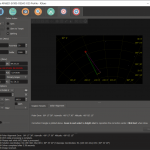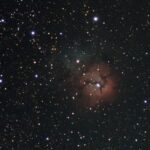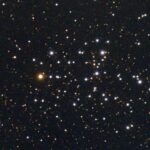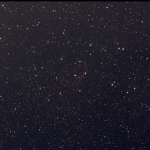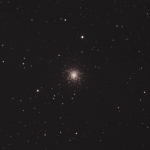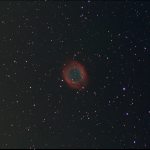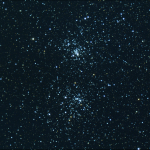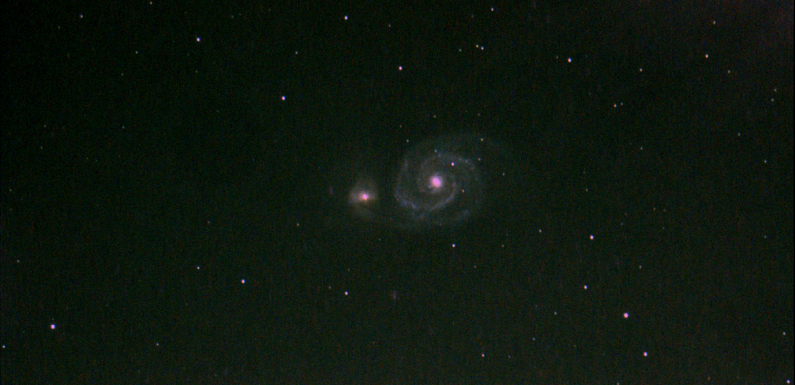
A nice clear night. A little cool in the lower 30’s. There is a little bit of a breeze and an occasional gust. Great night for some EAA. I was able to EAA observer several objects listed on the CloudNights February 2022 EAA Observing Challenge, and add a few more Messiers to the Messier Log.
I started the night around 6:30 PM dialing in my polar alignment. It was pretty close, now it is as close I think I will be able to get it (within a few 10s of arc seconds). I had planned to guide as well, but I kept having issues with the guide calibration… turned out I did something stupid (more on that at the end of the post).
All these EAA images were capture with my SV305 Camera through my Astro-Tech AT66ED and live stacked using SharpCap Pro. The mount and cameras are remotely controlled with KStars/Ekos/INDI running on an Astroberry Raspberry Pi.
IC 405, or The Flaming Star Nebula, is an emissions and reflection nebula in the constellation Auriga. IC 405 is an EAA Challenge object for February 2022. This is a live stack of 120 x 15 second exposures at 450 gain.
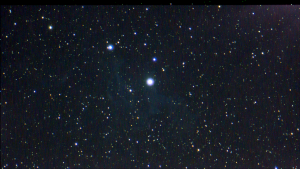
I could just start to resolve the nebula about 6 or 7 minutes into the live stack. It is still very faint after 30 minutes but I can resolve a bit more detail.
Hickson Compact Group (HCG) 10. This group of galaxies was also part of the EAA February 2022 Challenge list. This is a live stack of 60 x 30 second exposures at 400 gain.
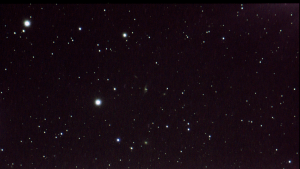
There are a number of galaxies in this group which are resolvable in this image including NGC542, NGC531, NGC536, and NGC529. These are all 200 million light years (or more) away. This is the capture with the SharpCap Deep Sky Image Annotations identifying the galaxies in the FOV.
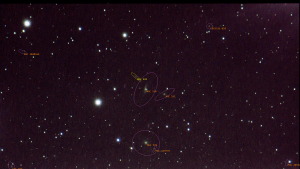
NGC2336 is a spiral galaxy located in the constellation Camelopardalis and an EAA Challenge object for February 2022. This is a live stack of 60 x 30 second exposures at 400 gain.
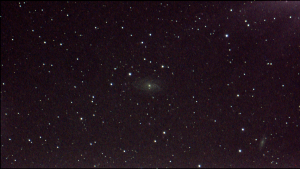
There is another faint galaxy, IC 467, in the lower right of the FOV.
M48 an open cluster of stars in the constellation of Hydra. This is a live stack of 60 x 15 second exposures at 350 gain.
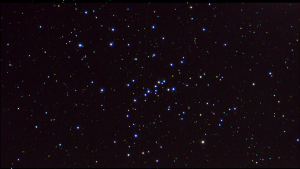
M40 an optical double star consisting of two unrelated stars in Ursa Major. This is a live stack of 40 x 15 second exposures at 450 gain.
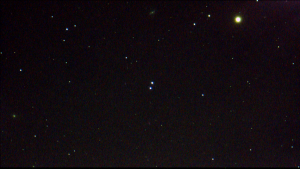
There are two galaxies in the FOV as well: NGC 4290 which is top center, and NGC 4335 to the lower left. The bright star at the top right is HIP 60212.
NGC2841 is an unbarred spiral galaxy in the constellation of Ursa Major and it is also an EAA Challenge object for February 2022. This is a live stack of 60 x 30 second exposures at 400 gain.
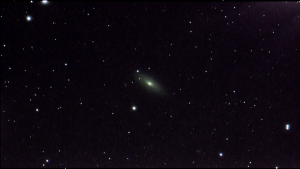
M51, the Whirlpool Galaxy, in the constellation Canes Venatici. This is a live stack of 60 x 30 second exposures at 450 gain.
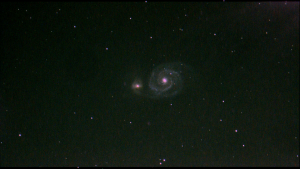
This was one of my favorites from the session. The stack is a little saturated, but there is a lot of nice detail and color in the two galaxies.
M63, the Sunflower Galaxy, in the constellation of Canes Venatici. This is a live stack of 60 x 30 second exposures at 450 gain.
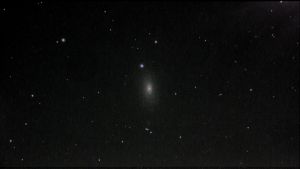
UGC 3697, the Integral Sign Galaxy, an edge-on spiral galaxy with an unusually pronounced warp in both its stellar and gaseous disks. This object was also part of the EAA February Observing challenge. The live stack is 60 x 30 second exposures at 450 gain.
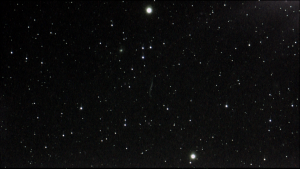
UGC 3697 is only about 151 million light years away.
There were a couple gusts of wind about 10 minutes into the EAA observing of UGC 3697. A few frames were dropped but the gusts can be seen in the stack with some trails on some of the brighter stars. There are a few other interesting galaxies in the FOV so here is the SharpCap Deep Sky Image Annotation of UGC 3697.
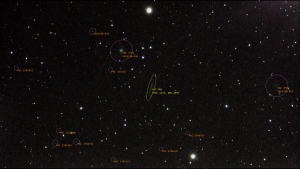
I called it a night at about 1 AM.
Remember I mentioned the issue with the guide camera calibration, well I had forgotten to connect the ST4 cable to the camera. I connected it to the mount side, just not to the point on the camera. I discovered this when I was packing things up. I was still able to get some great 30 second captures with nice round stars due to the polar alignment being so spot on. The only other issue I really had was the occasional gust of wind causing a dropped frame in the live stack here or there or causing some movement/trails to be visible in the stack.
Overall a great night filled with a lot of interesting objects.


